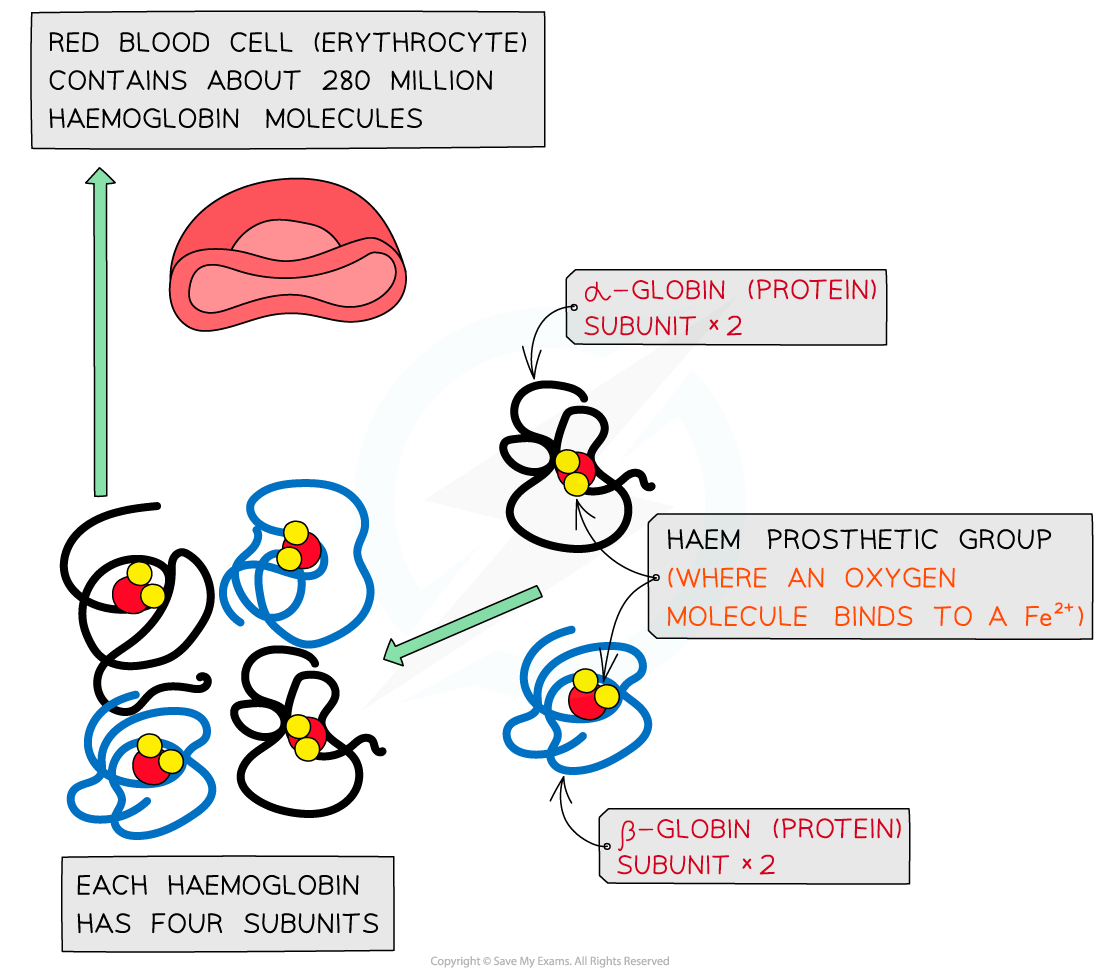Red Blood Cells, Haemoglobin & Oxygen (Cambridge (CIE) AS Biology): Revision Note
Exam code: 9700
Red blood cells, haemoglobin & oxygen
The majority of oxygen transported around the body is bound to the protein haemoglobin in red blood cells
Each molecule of haemoglobin contains four haem groups, each able to bond with one molecule of oxygen
This means that each molecule of haemoglobin can carry four oxygen molecules, or eight oxygen atoms in total

When oxygen binds to haemoglobin, oxyhaemoglobin is formed
Transport of carbon dioxide
Carbon dioxide produced in respiration is transported in the blood in three main ways:
A small proportion is dissolved directly in the plasma
Some binds to haemoglobin, forming carbaminohaemoglobin
The majority is carried as hydrogencarbonate ions in the plasma
The role of carbonic anhydrase
Inside red blood cells, carbon dioxide combines with water to form carbonic acid
This reaction is catalysed by the enzyme carbonic anhydrase
The carbonic acid then dissociates into hydrogencarbonate ions (HCO₃⁻) and hydrogen ions (H⁺)
The hydrogencarbonate ions move out of the red blood cells into the plasma, where they are carried in solution
Haemoglobinic acid
The hydrogen ions released in the dissociation of carbonic acid could lower blood pH
To prevent this, haemoglobin acts as a buffer:
Haemoglobin binds with hydrogen ions to form haemoglobinic acid (HHb)
This maintains the blood at a stable pH while still allowing haemoglobin to transport oxygen
Carbaminohaemoglobin
Some carbon dioxide binds directly to the amino groups of haemoglobin, forming carbaminohaemoglobin (HbCO₂)
This binding occurs more readily when haemoglobin has released oxygen in the respiring tissues

Unlock more, it's free!
Did this page help you?